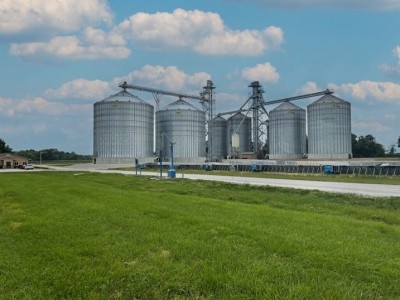US barley protein concentrate producer in production and sales licensing deal

In terms of target markets, this agreement covers only North America and Asia, said a representative for Scoular.
MMP, which operates a pilot plant and a research lab in Montana, won the Top Innovator Award for US Seafood at the 2019 Fish 2.0 Symposium for the BPC product, which is touted a sustainable, plant-based alternative protein targeted at aquaculture feed and pet food.
The protein product is produced from non-GMO barley without using harsh chemicals or solvents.
While potentially suitable for use in feed for all aquaculture species, BPC will have "more value for some species than others,” the spokesperson for Scoular told us.
Commercial-scale production
Central to the project is Scoular’s plan to construct a US$13m manufacturing facility to produce the BPC. It said the facility’s location has not yet been finalized, but it is likely that it will be built in Idaho to provide access to barley producers.
The investment is expected to create 13 jobs and the plant is scheduled to be operational by May 2021.
Initially, the new facility is projected to process 1.9m bushels of barley annually, with production projected to expand over the next several years. A high-energy liquid feed supplement for cattle feeders will be co-produced, said Scoular.
“The partnership illustrates Scoular’s ongoing commitment to creating innovative solutions for the feed ingredient supply chain.”
In a report on the Montana-based innovator last October, Clifford Bradley, co-founder with Montana Microbial Products, told us how the startup had been working with the Hatch Aquaculture Accelerator program, with a focus back then on market expansion in Europe.
“We needed to get in front of people in Europe – that’s where there’s both barley and a lot of aquaculture. We’re working with Hatch to turn over some opportunities to build production in Europe – either plants we participate in owning or licensing or any number of potential business structures to do that.
“That’s the real opportunity we see where there’s a lot of fish, salmon in particular, and a lot of barley production,” said Bradley.
Background
MMP, he told us back then, was founded following work with fish nutritionist, Rick Barrows, to develop an improved soy-based ingredient for use in aquafeed, said Bradley. However, the feed ingredient developed was not palatable to fish and the group started development work on barley.
“It doesn’t have the antinutritional [elements] in it,” said Bradley, of the reason barley was selected. “It’s grown in places where you can’t grow much else because of climate or short [growing] season, it’s a very low input crop and it looked like an ideal source for protein – we just had to figure out how to go from 12% to 65% protein.”
A process was developed to generate barley protein concentrate that could be used in aquafeed as an alternative to soy protein concentrate, said
“The basic process [is] we use enzymes to dissolve the carbohydrates and recover the protein – that’s the simplified version,” he added.
Another advantage to working with barley is that there are no approved genetically modified strains of the plant on the market, Bradley said.
Trial work
Feeding trials have also been run in the US, Canada, Scotland and Japan and samples of the BPC were sent to Norway for further evaluation studies, said Bradley last year.
The company ran a two-year feeding trial with Idaho-based Clear Springs Foods, which fed trout from “fry weight to market weight” using diets with barley protein and conventional feed, he said. The test included about 375,000 fish.
“One of the real advantages of the barley to other plant proteins, especially soy, is we can feed it at a relatively high inclusion rate,” he said. “The trial fed it at a 30% inclusion rate – and we’ve gone as high as 45% without any adverse effects, and you can’t do that with soy, not with trout and salmon at least.”
Fish receiving the alternative diet were found to be “indistinguishable” from those fed the conventional feeds in terms of production measures including growth rate and feed conversion efficiency, said the company co-founder. Adding, “And they still tasted like trout.”
The company has done feeding trials with multiple species including carnivorous species like trout and salmon, Bradley said. “Any place that has used soy protein could use the barley to advantage, we think, but we have focused on salmon markets because that’s where soy is limited by inclusion rates and sustainability issues.”
“For a variety of reasons that high-end salmon and trout market seems to be a place where we can compete competitively, but we’ve done feeding trial in eight different species of fish,” he said.








